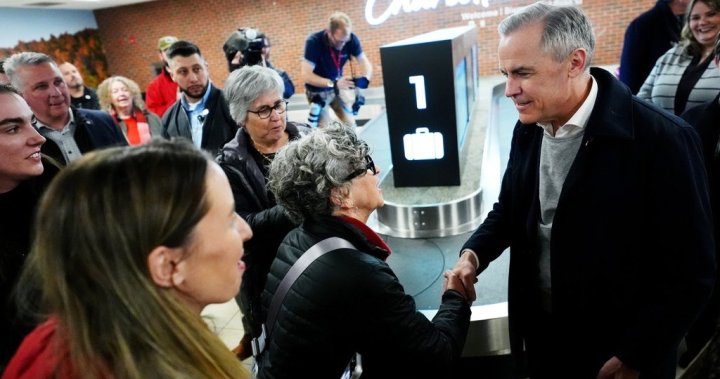The federal Liberals will form a minority government, Global News projects – so what’s next for consumers?
Now that Prime Minister Mark Carney’s party has secured the most seats in the House of Commons, here are some of the key promises made for the country’s economy and consumers.
It comes as the country faces the economic challenge of U.S. President Donald Trump’s trade war and tariffs.
“The coming days and months will be challenging, and they will call for some sacrifices,” Carney said in his victory speech. “But we will share those sacrifices by supporting our workers and our businesses.”
What did Carney promise on income tax?
The new Liberal government is expected to lower income taxes. Specifically, Carney promised a one per cent drop to the marginal tax rate for the lowest tax bracket
There are a total of five marginal tax brackets, which are scaled based on the amount of income earned by an individual or household.
This means the more someone earns, the more they are taxed. The less an individual or household earns, the smaller the percentage of income deducted.
The lowest tax bracket as of now is 15 per cent of all qualifying income earned up to $57,375. Carney’s promise would bring that 15 per cent down to 14 per cent instead.

Get breaking National news
For news impacting Canada and around the world, sign up for breaking news alerts delivered directly to you when they happen.
Carney and his party estimated, when making the campaign promise, that this tax discount would save individuals up to $412 per year, or $825 for two-income families. The party added that these figures are based on data showing 82 per cent of those who would benefit make less than $80,000 annually.
What is still unclear is exactly how Carney and his cabinet plan to offset the loss of revenue from such a cut.
In addition, Carney has vowed not to increase the capital gains tax. This means that if someone profits from the sale of an asset, such as a home, stocks, or other equities, the amount the government taxes on that profit would not rise under Carney’s watch.

What about housing incentives?
Housing affordability is something Canadians have struggled with for years as the markets gets more out of reach, especially for first-time buyers.
Carney campaigned on removing the GST tax on newly built or renovated homes priced under $1 million (an increase from $450,000) – provided the buyers have never purchased a home before.
“This is not a viable long-term trajectory for the country,” says political science professor Christopher Cochran at University of Toronto.
“It should have changed 20 years ago. It really should have change 10 years ago. Now it’s potentially too late, but there’s no question that the next government is going to have to solve that problem.”
What has been done so far, and what comes next?
The promises made on the GST for first-time home buyers, as well as that of lower income taxes are on top of measures Carney already implemented as prime minister before he called the election.
This includes lowering the consumer carbon price, which resulted for instance in lower prices at gas pumps across the country, as well as making it easier for some Canadians to access employment insurance given the uncertain economic outlook.
With the trade war sparked by U.S. President Donald Trump’s tariffs expected to create a dim economic outlook for Canadians, Carney will be faced with a tremendous challenge of improving affordability.
“I think we’re in a very different kind of political environment, not new to Canadian history, but new to any but the oldest Canadians among us,” says Chochrane, “and it’s going to be a very challenging few years.”

© 2025 Global News, a division of Corus Entertainment Inc.
Here’s what Carney has promised for consumers on taxes and affordability




